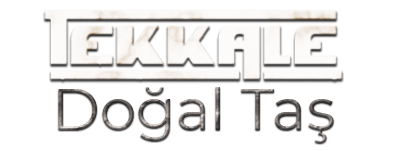
To truly experience Eye of Horus’ peak performance, guarantee your setup includes a quad-core CPU at a minimum 3.5 GHz clock speed, paired with 16 GB RAM or more. Opt for a GPU from the NVIDIA GeForce RTX or AMD Radeon RX series with support for DirectX 11 or newer. An SSD, ideally NVMe, will enhance retrieval speeds. But there’s another key aspect you might overlook that’s essential for smooth gameplay—any idea what it could be? Eye Of Horus Mobile
Key Takeaways
- A quad-core processor at 3.5 GHz is recommended for peak Eye of Horus gameplay performance.
- Make sure a minimum of 16 GB RAM, preferably 32 GB, to avoid bottlenecks during gaming.
- Use a dedicated NVIDIA GeForce RTX or AMD Radeon RX graphics card for DirectX 11 support.
- Install Eye of Horus on a high-speed SSD, ideally NVMe, for quicker data access.
- Keep the operating system up-to-date to the latest version for stability and enhanced performance.
Minimum System Requirements
To guarantee you can ibisworld.com play Eye of Horus, your system must meet certain minimum requirements.
These specifications ascertain you’ll experience optimal gameplay fluidity and enhance your user experience. Start with a processor speed of 2.5 GHz, featuring at least a dual-core configuration. Equip your setup with 4 GB of RAM, enabling productive multitasking and smoother interactions.
A dedicated GPU supporting DirectX 11 or later is essential for rendering detailed graphics with minimal lag. Ensure your hard drive has at least 10 GB of free space, facilitating smooth installation and operation.
Finally, maintain an up-to-date operating system, supporting either Windows 10 or macOS 10.13+. By adhering to these specifications, you’re ensuring that Eye of Horus performs smoothly and releases boundless gaming potential.
Recommended System Specifications
While achieving minimum requirements begins your experience, peak operation is most effectively reached with the recommended technical specs for Eye of Horus. By utilizing the exactness of gameplay enhancement tips and grasping software updates’ importance, you’ll experience smooth involvement.
Here’s the essential arrangement:
- Processor
- RAM
- Storage
- Operating System
Arrange your configuration methodically. Release is forthcoming with perfect performance and captivating gaming.
Graphics Card Compatibility
Setting up the ideal setup for Eye of Horus goes beyond simple spec adjustments and demands careful attention to your graphics card compatibility.
Start by reviewing well-known GPU models like NVIDIA’s GeForce RTX or AMD’s Radeon RX series. These provide substantial performance potential, but they’re not universally compatible.
Examining compatibility concerns involves scrutinizing DirectX compatibility and VRAM requirements. Ensure your selected model meets the game’s visual requirements. For instance, outdated cards may falter under Eye of Horus’s visual demands, causing delay or breakdowns.
Research producer specifications—ensure that it’s enhanced for the game to prevent performance bottlenecks. pitchbook.com
You’ve got the power to overcome these obstacles, so embrace technical precision and take control, leading to a smooth, immersive gaming voyage.
Processor Power Essentials
When it comes to maximizing performance for Eye of Horus, understanding processor power fundamentals is key. Employing processor efficiency and superior multitasking capabilities guarantees fluid gaming experiences, eradicating lag and execution errors.
You can attain these benchmarks through specific processor attributes:
- Core Count
- Clock Speed
- Thread Count
- Thermal Design Power (TDP)
Memory and Storage Needs
To complement processor power requirements, emphasizing memory and storage needs is essential for enhancing Eye of Horus performance. You’ll need robust memory enhancement and solid storage management.

Adequate RAM is essential; aim for a minimum of 16GB to prevent bottlenecks, though 32GB guarantees smooth operations. Fast SSDs, preferably NVMe, deliver swift data retrieval, improving overall experience. Don’t overlook virtual memory; set up it to manage unexpected surges.
For storage management, keep your drive organized. Adopt a habit of regular file trimming, maintaining at least 25% free storage space.
Organize data for quick access, lowering latency. Employ automated tools for robust memory and storage enhancement—liberating you from manual micromanagement.
Achieve true digital freedom by outfitting Eye of Horus with meticulous memory and storage execution.
Enhancing Functionality With Extra Accessories
Although the core components are vital, integrating the appropriate accessories can greatly boost Eye of Horus’s efficiency.
Maximize its potential by evaluating the following enhancements:
- Advanced Controller Types
- Resolution Settings Adjuster
- High-Performance Audio Systems
- Modular Stands and Mounts
Adopt these enhancements, and you’ll unleash Eye of Horus’s full capabilities, producing a superior and limitless entertainment experience.
